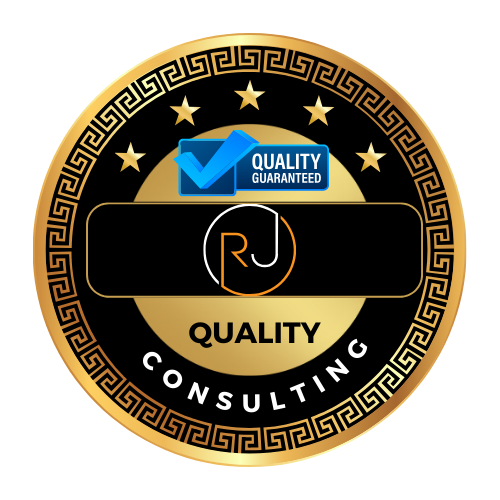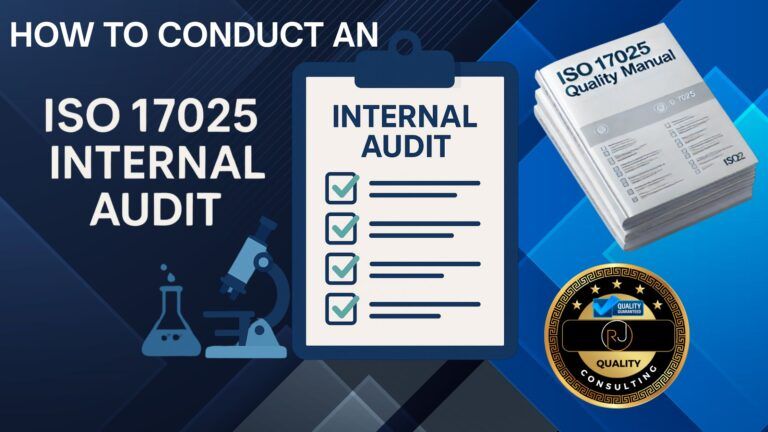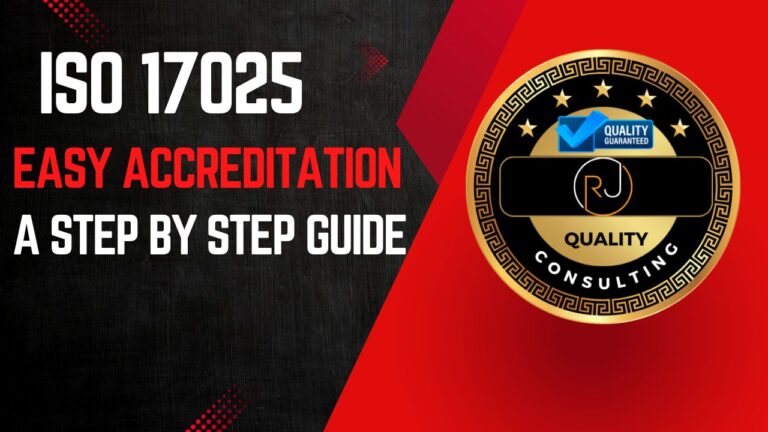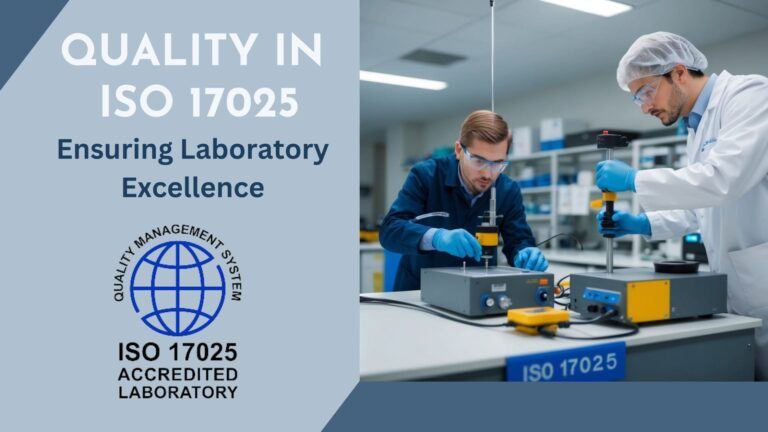Why Every Lab Needs an ISO 17025 Quality Manual Template: Key Benefits Explained
Quality management holds a big place in any laboratory that wants to keep its reputation strong and its work reliable. As someone who has performed plenty of ISO/IEC 17025 assessments over the years, I’ve seen just how much of a difference a structured approach to quality can make and why every lab needs an ISO 17025 quality manual template as a foundation to meet these stringent requirements. It’s not just about ticking boxes. It’s about showing the world you care about accuracy, consistency, and transparency in everything you do.
Video Overview – Why Every Lab Needs an ISO 17025 Quality Manual Template
Welcome to this overview of why every laboratory should consider using an ISO 17025 quality manual template, or ISO 17025 templates. In this video, we’ll explore the key benefits of aligning your quality manual with the ISO/IEC 17025 standard, how it facilitates smoother audits, and how it streamlines your internal processes. Whether you’re preparing for accreditation or looking to enhance your lab’s quality management system, this guide will provide valuable insights to help you succeed.
📘 ISO/IEC 17025 Quality Manual Template
Accelerate your lab’s accreditation process with our comprehensive Quality Manual Template, designed to align with ISO/IEC 17025:2017 standards.
- Fully editable and customizable to fit your laboratory’s needs.
- Includes all necessary procedures, forms, and policies.
- Structured to facilitate easy implementation and compliance.
- Developed by experts with extensive ISO/IEC 17025 experience.
What ISO/IEC 17025 Means for Labs
ISO/IEC 17025 sets out the global benchmarks for testing and calibration laboratories. If you work in a lab or run one, you probably know this standard is recognized everywhere. It covers the key technical requirements for competence, as well as the management systems that support reliable results. Accredited labs get more business, win bigger contracts, and generally have a lot more peace of mind when it comes to audit season.
But actually putting ISO/IEC 17025 in place can feel overwhelming at first. There’s a ton of documentation, from procedures to records, and lots of specific reporting and review steps to manage. That’s where an ISO 17025 quality manual template can save you a lot of headaches. I’m explaining the top benefits that come with using a well-made template, especially if it’s designed by a certified auditor who knows the standard inside and out, and making sure you know what to look for in one.
Streamlined Compliance
Meeting ISO/IEC 17025 requirements isn’t something you do on a whim. There are many detailed clauses to consider, and the standard updates every few years. A quality manual template, especially one built by a qualified ISO/IEC 17025 auditor, lays out each requirement in a clear, logical way, and allows you to get an idea of a good ISO 17025 quality manual example. All the essential clause elements, like scope, impartiality, confidentiality, equipment, personnel, and procedures, are accounted for right from the start.
This type of template really speeds up the process of getting compliant. Instead of starting from a blank page, you fill in specific details relevant to your lab. There’s no guessing about what to include or how to phrase your commitments. The template walks you through everything in a sequence that matches the standard, making the whole adventure feel much smoother. If you’ve ever tried to write a quality manual from scratch, you’ll know just how much time and frustration a template can save.
- Time Savings: No need to reinvent the wheel; simply adapt the framework to your own processes.
- Reduced Complexity: Step by step prompts keep you on track, which is really important if you’re new to 17025.
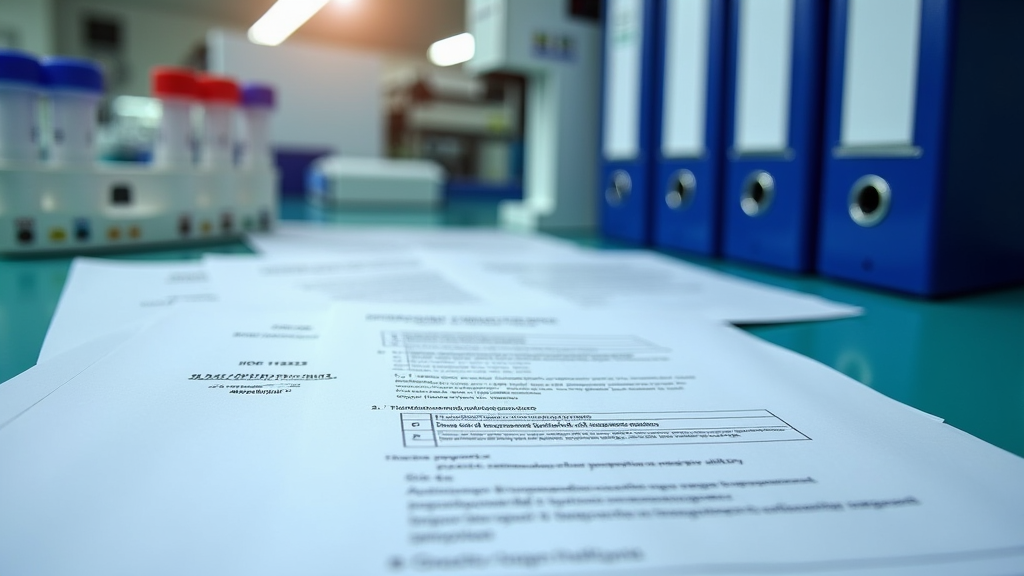
Better Consistency and Accuracy
Every lab wants its results to be consistent, accurate, and trustworthy. That’s kind of the whole point behind ISO/IEC 17025. When you use a structured template that’s built to line up perfectly with the standard, you help make sure that everyone on your team follows the same rules and procedures, every single time.
By having standardized procedures written out in one place, everyone knows exactly what’s expected. There’s no confusion about reporting, reviewing, or handling nonconformities. This helps cut down on human errors and it keeps your results reliable week after week. When auditors come knocking or clients want proof you’re top notch, you have everything clearly documented and ready to show off.
- Fewer Mistakes: Clear instructions mean less risk of someone missing a step or skipping a control.
- Reliable Output: Consistent methods support solid, defendable data in all your testing or calibration work.
How an ISO 17025 Quality Manual Template Streamlines Audits and Internal Reviews
Utilizing an ISO 17025 quality manual template that aligns with the standard’s clause structure significantly enhances both external and internal audit processes. Such a template provides a clear, organized framework that mirrors the ISO/IEC 17025:2017 requirements, allowing external assessors to efficiently verify compliance. This structured approach reduces the time and effort needed during assessments, as auditors can easily trace each requirement to the corresponding documented procedure or policy. Moreover, it minimizes the risk of overlooking critical elements, ensuring a comprehensive evaluation of the laboratory’s quality management system.
Internally, a clause-aligned quality manual template serves as a valuable tool for conducting thorough and systematic audits. It enables internal auditors to methodically assess each aspect of the laboratory’s operations against the standard’s requirements, facilitating the identification of areas for improvement. This alignment not only streamlines the internal audit process but also promotes consistency and clarity across the organization’s quality practices. By adopting such a template, laboratories can foster a culture of continuous improvement and maintain readiness for external assessments.
Improved Staff Training and Onboarding
Bringing new staff into a lab takes time, and a lot of that goes into training. When you hand new team members a well-designed quality manual based on a solid template, their learning process gets a whole lot easier. Everything is mapped out: what forms to use, how to review results, who approves what, and more.
For staff who have been around for years, a properly organized manual helps refresh and reinforce best practices. It also comes in handy when skills audits or refresher courses are due. A quality manual set up with newbie training in mind saves time for managers, shortens the learning curve for new hires, and cuts down on repeated questions. I’ve seen onboarding times practically halved in labs that switched to a more structured, template-based manual.
- Smoother Onboarding: New staff can reference the manual to settle in quickly.
- Higher Competency: Everyone works from the same playbook, so training gaps are easier to spot and close.
Making Continuous Improvement Easier
ISO/IEC 17025 isn’t something you ‘set and forget.’ The standard wants labs to aim for constant improvement, meaning regular reviews and ongoing updates to how things are done. A good quality manual template includes spaces and prompts for internal audits, management reviews, corrective actions, and preventive planning.
This means continuous improvement becomes a regular part of your lab’s routine, not an afterthought. The manual reminds you when to schedule reviews, prompts the right stakeholders for input, and helps document what’s working and what needs fixing. In my experience, labs using templates like this spot problems sooner, fix them faster, and often come up with creative process improvements more frequently, just because everything is so clearly mapped out.
- Routine Reviews: Built in reminders make it easy to keep improving your systems over time.
- Track Your Progress: Documenting changes and lessons learned builds a great foundation for future audits and reaccreditation.
Increased Customer Confidence
Labs don’t operate in a vacuum. Clients, regulators, partners, and sometimes even the public need to know they can trust your results. An ISO/IEC 17025 quality manual, laid out in line with the standard and created with professional expertise, gives your lab added credibility. Your clients see that your processes aren’t just robust. They’re anchored to international best practices.
This kind of transparency and professionalism helps win repeat business, encourages referrals, and can even support you in landing big contracts that require proof of accreditation. It’s a great way to show you’re up to the task and you take your responsibilities seriously.
- Build Trust: Shows that your lab operates at a high, internationally recognized level.
- Boost Opportunities: Competitive edge when clients compare providers or when responding to tenders.
Choosing the Right ISO 17025 Quality Manual Template for Your Lab
Not all quality manual templates are created equal. It’s really important to pick one designed by someone who knows ISO/IEC 17025 clause by clause; ideally a certified auditor or an assessor who’s worked across different labs. A solid template will:
- Follow the clause structure of ISO/IEC 17025 (scope, procedures, responsibilities, and so on)
- Include practical guidance, not just generic statements
- Come with example forms and sample procedures that can be tailored to your lab
- Offer clear prompts for updates and reviews, so the manual grows with your lab
Spending a little extra to get a template made by someone with assessor experience often pays off, since it’s far more likely to pass an accreditation review without last minute rewrites.
Frequently Asked Questions
What’s actually included in a good ISO 17025 quality manual template?
A well built template covers everything from scope and structure through detailed procedures for personnel, competence, equipment, calibration, sample handling, data integrity, complaints, corrective actions, internal audits, and management reviews. Some comprehensive templates even include checklists and prefilled forms you can easily adjust for your own lab.
Does using a template mean our manual will be “cookie cutter” or not fit our lab?
No. The point of a good template is to give you a foundation that you adapt to fit your lab’s size, specialties, risks, and unique needs. You add specifics, examples, and attachments as needed. The goal is to save time and give you clear structure, not force every lab into the same mold.
How often should a 17025 quality manual get updated?
Most labs review and update their manual each year, or whenever the standard changes or lab operations switch up. Templates make it easier to spot and make these changes quickly, keeping your documentation fresh.
Is a template all I need to get accredited?
A template is a huge help, but you’ll still need to train your team, run internal audits, and make sure your lab culture lines up with what’s on paper. The template just makes the paperwork side way easier and more reliable.
Wrapping Up
An ISO 17025 quality manual template brings a ton of value to any lab, new or experienced. It makes compliance less overwhelming, gives a boost to staff performance, supports ongoing improvement, and reassures clients that your work stands up to scrutiny. Using a template crafted by someone with hands on auditor experience means you get a tool that really matches what inspectors expect to see. If your lab is aiming for smoother audits, stronger data, and a more confident team, adopting a well-structured ISO 17025 quality manual template is definitely worth considering. Taking this step will set your lab up for continued success in a highly competitive field.
🕒 Book Your Free 45-Minute Consultation
Have questions about ISO/IEC 17025 or ISO 9001 implementation or accreditation? Schedule a free 45-minute consultation with me to discuss your Company or laboratory’s needs and how we can achieve compliance together.
Schedule Your Consultation